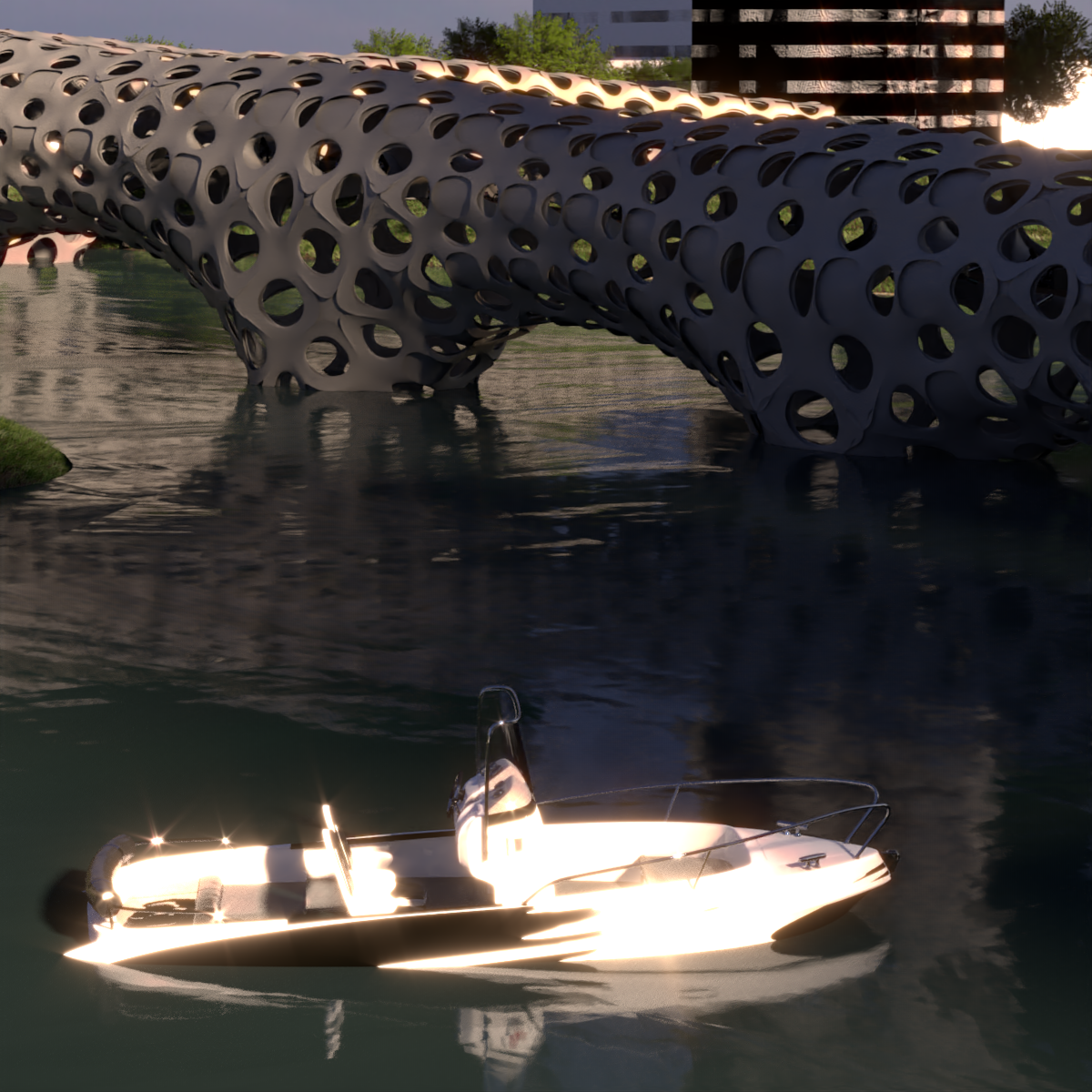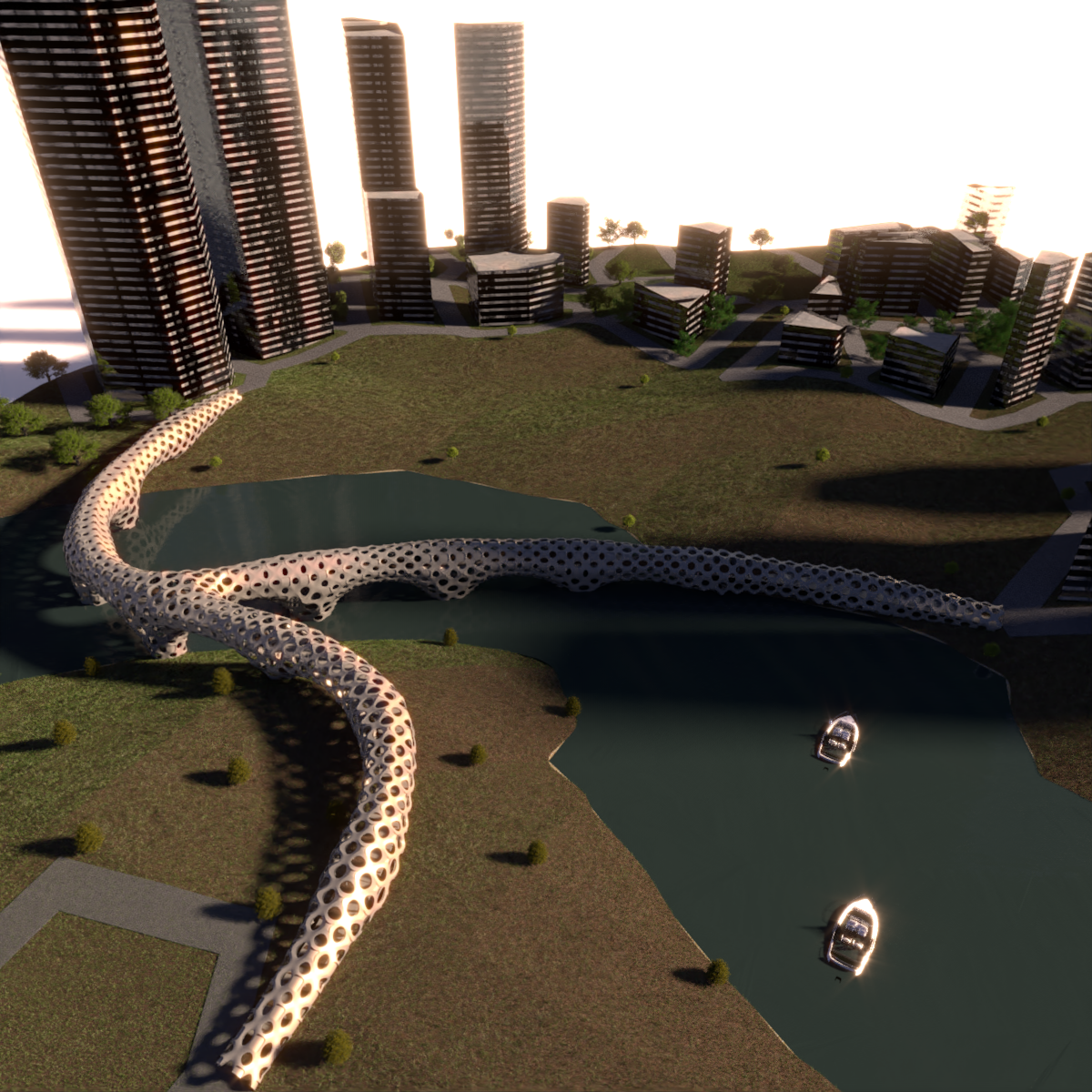[OSSIS]
Experimental Exoskeletal Bridge Project based on the Algorithmic Growth of Bone Like Modular Units.
Objective:
To provide an exoskeleton structure that provides a scenic route for both pedestrians and bikes.
Site analysis and Assumptions:
The site provided was assumed to be split by the river to a metropolis area (larger density of streets) and an
urban area(lower density), thus the flow of people will be between the hot zones amongst these two different typologies of functions. Three hot zones were selected as per the assumed typology and function (two in the metropolis and one in the urban) to be the progenitor nodes for the bridge/s.
[OSSIS - SITE ANALYSIS]
Exoskeletal development:
The selected exoskeleton was thought of based on the basic buildup of bone structures, thus it was thought to mimic the interaction between the trabecular and cortical bone cells within a light concrete shell and rebar. The rebar is intended to generate a lattice structure to be covered with light concrete membranes to give it a smoother look along with completing the structural requirement of a thin concrete shell.
Iteration one:
The lattice was thought to be generated by a single layer of rebar connected with a central adjustable junction. This methodology has its downfall as it is limited in the three dimensional interaction between the lattice members.
Iteration Two:
The lattice was thought to be produced in a 2mX2mX0.6m pre-fab unit that can be adjusted as per the digital optimized module. Once produced, multiple layers of light weight concrete can be poured onto the lattice to generate the final forms. The completed units can then be transported into site and fixed into place. This methodology also allowed us to optimize the shell structure to integrate into the walkable platform and thus maintaining the exoskeletal integrity and unity.
Form Generation:
The form was generated to adapt to a multitude of parameters, such as the overall height of the total structure (which affects the thickness of the lattice) and intended views (which will affect the distribution of the lattice members and the concrete cover.
Future Development:
A multitude of parameters can be introduced such as the structural relaxation of the generating form, a further development into the material selection, and a better unit design and unit integration methodology. Another adjustment that can be introduced is the proper generation of the walkable platform form the overall lattice form instead of the current integration to truly achieve a uniform exoskeletal structure.
Further to the above, a more apparent degradation of pattern can be provided to better the commuters feel of exposure to the surrounding scenery and break the monotony of a component replication design, thus providing larger holes into the structure for wider uninterrupted view.
[OSSIS - FORM GENERATION]

![[OSSIS - SITE ANALYSIS]](https://images.squarespace-cdn.com/content/v1/5ae9af4a5cfd79c832c1710e/1633303755045-G87VXUTC3KYZFS54AWLZ/Webp.net-gifmaker+%2814%29.gif)


![[OSSIS - FORM GENERATION]](https://images.squarespace-cdn.com/content/v1/5ae9af4a5cfd79c832c1710e/1633304490490-YYLI69OLW5ONAC5FA0G0/Webp.net-gifmaker+%2817%29.gif)











